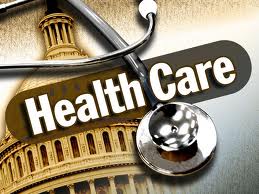 Physician burnout is a growing problem and docs are turning in lots of new directions like moving to concierge medicine from traditional Medicare.
Physician burnout is a growing problem and docs are turning in lots of new directions like moving to concierge medicine from traditional Medicare.
 Physician burnout is a growing problem and docs are turning in lots of new directions like moving to concierge medicine from traditional Medicare.
Physician burnout is a growing problem and docs are turning in lots of new directions like moving to concierge medicine from traditional Medicare.
It is a bit scary, but it is also a bit too real. I finally caught up with a report from the August 2012 online issue of the Archives of Internal Medicine that reported the results of a national survey of more than 7000 U.S. physicians, which revealed that nearly one-half of the physicians reported at least one symptom of burnout. What was even more ominous is that the reported burnout out rate of physicians was higher than all other workers in the U.S!
The researchers used the Maslach Burnout Inventory for the study. Among the respondents, 38 percent of the physicians showed high levels of emotional exhaustion, 29 percent showed evidence of a high level of depersonalization, and 12 percent had a low sense of personal accomplishment. As a whole group the researchers found that 46 percent the physicians were experiencing at least one symptom of burnout. The pool of nearly 7000 surveyed physicians were matched against a control group of 3400 workers in the United States, who were not physicians. The table listed below provides the data comparing the two groups. It’s clear that the docs have a bigger problem with burnout than the regular population.
Comparison of Employed MDs and Employed US Population
| Physicians(n = 6179) | Population Control Participants (n = 3442) | |
| Emotional exhaustion: high score | 32.1% | 23.5% ( P < .001) |
| Depersonalization: high score | 19.4% | 15% ( P < .001) |
| Burned out | 37.9% | 27.8% ( P < .001) |
| Satisfaction with work-life balance(“work schedule does not leave enough time for my personal or family life”) | 40.1% | 23.1% ( P < .001) |
In addition, the study found that there were distinctive and “substantial” differences in the rate of burnout between the various specialties. The highest rate of physician burnout was for those providers who serve on the front line of care such as family medicine, general internal medicine, and emergency medicine. Not surprising, from a physician point of view, the lowest rate of burnout was among those “ologists” that have more controlled and time-managed lives such as pathologists, dermatologists, and those practicing preventive medicine. The exception was the general pediatricians who were also among the low burnout group.
Interestingly, the “low burnout physicians” rated the highest in satisfaction related to work-life balance (i.e. dermatology, general pediatrics, and preventive medicine). Alternatively, the physicians with the lowest satisfaction with work-life balance were those practicing general surgery, general surgery subspecialties, and obstetrics/gynecology. Again, these practices represent areas of medicine where often the control of one’s own time is a problem.
The other interesting fact is that among other professions which were studied, the higher your education and the more advanced your professional degrees – the lower your dissatisfaction with work-life balance, except for medicine. In medicine, just the opposite occurs. So, what were the factors that contributed to dissatisfaction? The biggest issue was the number of hours worked per week, which was associated with a higher probability of burnout. On the other hand, being older and being married was both significantly associated with a lower overall risk of dissatisfaction.
In essence, the study is one of the first of its kind studying physicians in practice. In recent years, there have been a number of reported studies among medical students and residents outlining the issues they face and the precipitating factors for burnout and suicide. Now, we have a more definitive study for the physicians in practice. And, the findings are clear. According to Colin West, MD, PhD, of the Mayo Clinic and a co-author of the burnout study, “there are two consistent factors that seem to drive burnout – lack of control or autonomy and loss of meaning in what physicians do.” The findings have implications for the evolving healthcare reforms and how physicians will respond. To that end, it seems that the docs are shifting their practices away from traditional modalities to newer ones that give them more control.
In yet another report published in an online abstract of General Hospital Psychiatry in November, 2012 the issue of suicide among physicians was studied. The study pointed out that job stress, coupled with inadequate treatment for mental illness, most likely accounts for the higher than average rate of suicide among U.S. physicians compared to the general population. The researchers used data from the National Violent Death Reporting System (NVDRS) which included 31,636 suicide victims aged 18 years and older from 17 states. Of the total number of suicides in the database, 203 were physicians. Of particular note, the study found that there were no significant differences in current mental health disorders between physicians and nonphysicians (46% vs. 41%) or level of current depression (42% vs. 39%). Also, there was no difference found for the two groups with respect to co-morbid current depression, substance or alcohol abuse disorder, or other known mental illness. It will come as no surprise that firearms were the most common method of suicide for both groups followed by poisoning, blunt trauma, and asphyxia, which included hanging.
So, the major questions is: How are the physicians dealing with the burnout and stress of practice? One of the ways they are dealing with the stresses and strains of practice is to change their practice. In a new survey of 14,000 physicians by the staffing firm Merritt Hawkins conducted for The Physicians Foundation, nearly 10% of the practices indicated that they were planning to convert to concierge practices sometime in the next three years. Concierge medicine is where the physician has a much smaller group of individuals for which he or she provides ongoing, comprehensive care and is paid a flat per month fee for 24×7 access to the physician. The move by physicians into the concierge mode of practice has clear implications on the nation’s workforce supply especially since the demographics of an aging bolus of baby boomers becomes eligible for Medicare.
All of these changes are also supported by a previous report released by the AMA in 2010 which noted the move toward restricting practices has a growing head of steam. According to the 2010 AMA survey of nearly 9,000 physicians who provide care under the Medicare program, one in five physicians of the general physician population and one in three of primary care providers were restricting the number of Medicare patients in their practice. Under the concierge model, physicians contract directly with patients to provide all of their primary care needs free of insurance interference. These services are generally priced between $50 and $60 a month per patient.
To address the movement, Representative Bill Cassidy, MD (R-LA) has introduced legislation to create a pilot program that would provide “monthly fee-based payments for direct primary care medical homes” for certain Medicare beneficiaries. Opposition from the insurance industry is likely as they have generally opposed the concierge medicine movement in general. Cassidy introduced the legislation at the urging of supporters of the direct primary care approach so that research could be done on the pilots and show Congress as well as the Obama administration that the concept can provide quality medical care and lower costs. I fully expect that we will see some type of experimentation on this model in the next few years.
While the end of fee-for-service medicine is not imminent, there are many changes afoot which are challenging the traditional payment methodology for physician-delivered care. Compounding the problem is dreaded sequester – which was created so that it would never happen. The “word on the street” in Washington, D.C., however, is that it will, in fact, move ahead when the current extension ends in March. Under that scenario, the automatic cuts required by the sequester would reduce Pentagon spending by 7 percent and domestic programs by 5 percent. While food stamps and Medicaid would be exempt, Medicare could take up to a 2 percent reduction, which would no doubt result in lower payments to physicians.
Coupling lower payments with the desire to reduce their stress along with all of the other uncertainties in the healthcare market seems to be accelerating the move of physicians into concierge type programs. So, it’s clear that the docs are considering other alternatives and that the stress of practice along with lower incomes are major factors in pushing them toward these new models of care.







